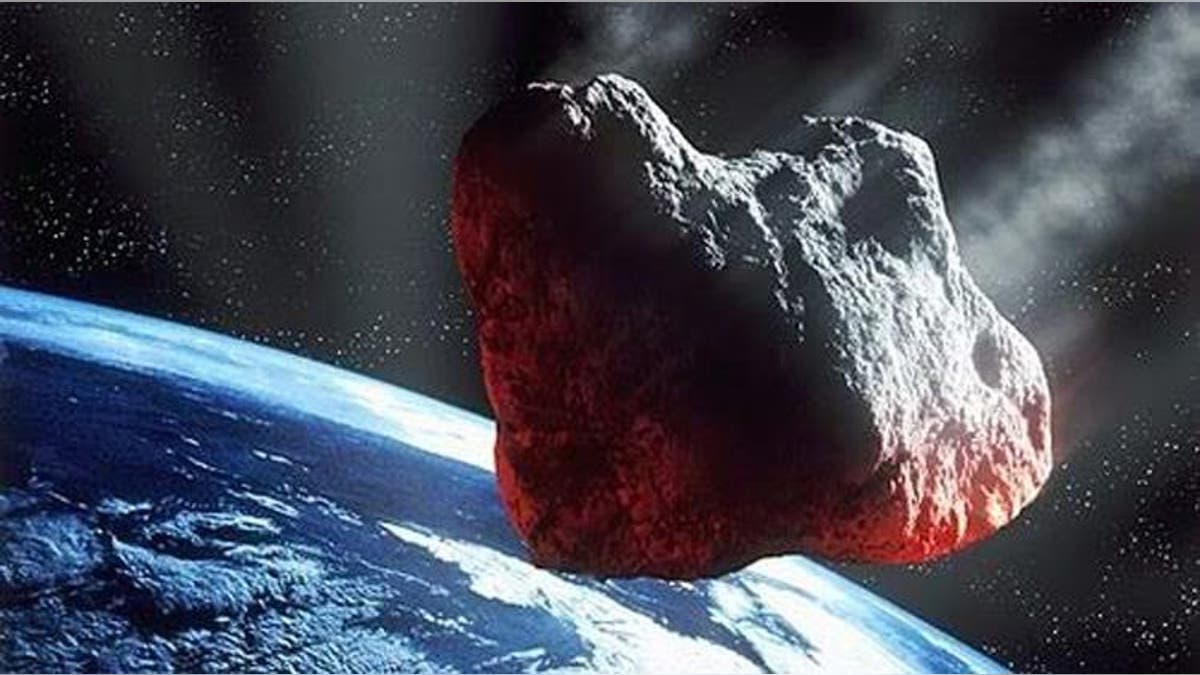
Artist's illustration of a potentially hazardous asteroid headed for Earth. (ESA)
People are too complacent about the asteroid threat for Bill Nye's liking.
The former TV "Science Guy," who currently serves as CEO of the nonprofit Planetary Society, warned that catastrophic impacts like the one that offed the dinosaurs 66 million years ago are not confined to the past.
"The Earth is going to get hit with another [big] asteroid," Nye said May 2 at the International Academy of Astronautics' 2019 Planetary Defense Conference in College Park, Maryland.
More from Live Science
- Deflecting Killer Asteroids Away From Earth: How We Could Do It
- Humanity Will Slam a Spacecraft into an Asteroid in a Few Years to Help Save Us All
- This Is NASA's New Plan to Detect and Destroy Asteroids Before They Hit Earth
- Potentially Dangerous Asteroids (Images)
"The problem is, we don't know when," he added. "It's a very low probability in anyone's lifetime, but it's a very high-consequence event. If it happens, it would be like control-alt-delete for everything."
Unlike the dinosaurs, however, we don't just have to sit around and wait for doom to rain down on us. We can do something about the asteroid threat — and we should start prepping for it now, Nye stressed.
The first step is to find the dangerous space rocks. There's good news on this front: NASA scientists think they've already discovered more than 90% of the potential civilization-enders — near-Earth asteroids at least 0.6 miles (1 kilometers) wide — and none of these mountain-size space rocks pose a threat for the foreseeable future.
But there are lots of undiscovered asteroids zooming through near-Earth space that could do serious damage on a local scale — wiping out an area the size of a state, for example. So, it would behoove us to get some better detection tools online, Nye said.
Such help is coming, and soon. For instance, the Large Synoptic Survey Telescope, a big instrument set to start observing the heavens next year from Chile, will likely be able to discover and catalog 80% to 90% of potentially hazardous asteroids at least 460 feet (140 meters) wide, project team members say.
And NASA is considering launching a dedicated asteroid-hunter called the Near-Earth Object Camera. This proposed mission would scan for space rocks in infrared light, spotting their heat signatures in the darkness.
Coordination is the next step after detection, Nye said. A big asteroid hurtling toward Earth would be a global issue, so the international community would have to work together to deal with it.
And we'd have several options at our disposal. If we had enough warning time — years or, preferably, decades — we could launch a probe to fly alongside the asteroid, gradually nudging the rock off course via a gravitational tug. This "gravity tractor" craft would ideally boost its pull by plucking a big boulder off the asteroid, said NASA Chief Scientist Jim Green, who participated in yesterday's event with Nye.
If we were pressed for time, we could slam one or more spacecraft into the asteroid, knocking it onto a benign trajectory through brute force. Or we could detonate a nuclear weapon near the rock, vaporizing much of its surface. The resulting mass loss, and the flow of material off the asteroid, would change the rock's path, experts say. And the shock wave from the blast might do the trick by itself, Nye said.
Nye also mentioned the "Laser Bees" strategy, which involves sending a swarm of small spacecraft out to the potentially dangerous asteroid. Each little probe would focus a laser beam on the same spot on the rock, vaporizing material and causing a jet to erupt. This jet would serve as a sort of engine that would push the asteroid onto a different path.
During his portion of the presentation, Green highlighted the many things we can learn from asteroids — they're time capsules from the dawn of the solar system, after all, and carbon-rich rocks may have helped life get started on Earth — and their potential benefits for exploration. Tapping into asteroid resources could make voyaging spacecraft and astronauts more self-sufficient and improve life here on Earth as well, he said.
But Green agreed with Nye that the space-rock threat is real: There are catastrophic impacts in our future if we don't do something about them.
"It's not a matter of if; it's only a matter of when," Green said.
Mike Wall's book about the search for alien life, " Out There " (Grand Central Publishing, 2018; illustrated by Karl Tate ), is out now. Follow him on Twitter @michaeldwall . Follow us on Twitter @Spacedotcom or Facebook .




















